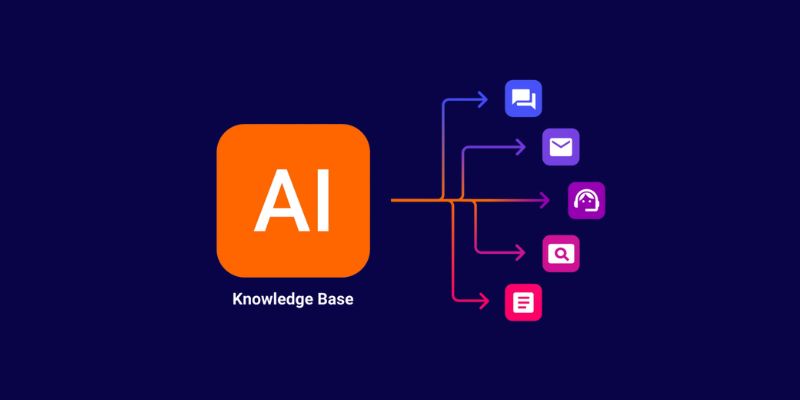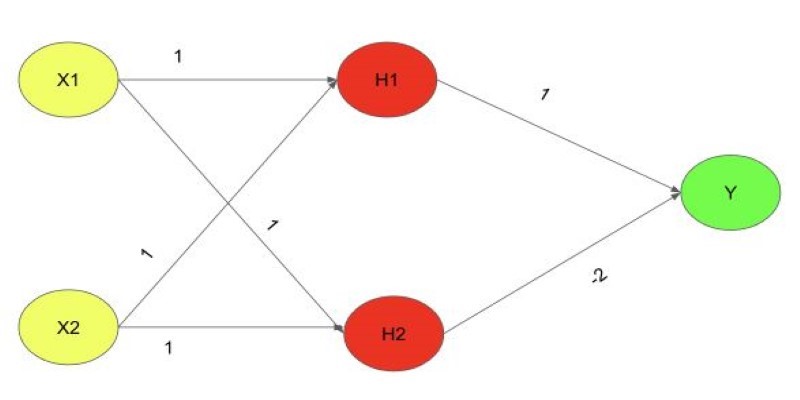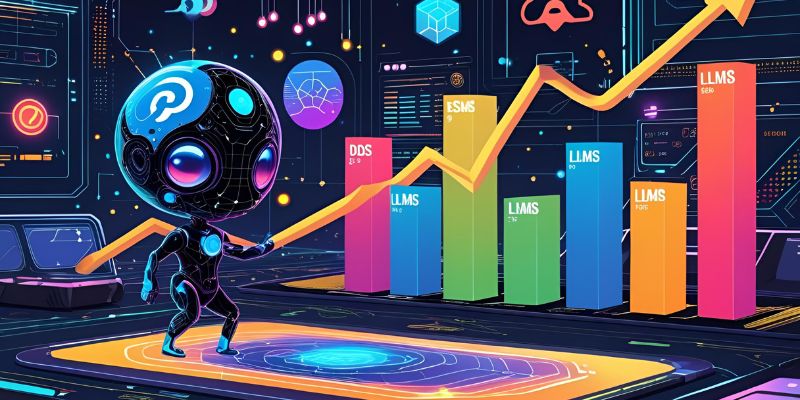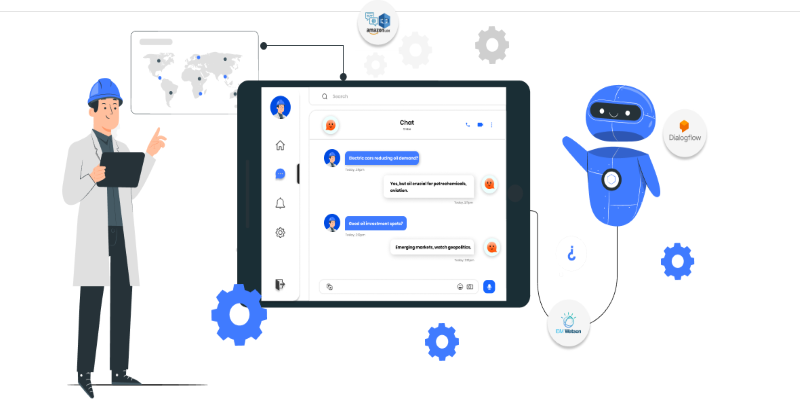Advertisement
Among artificial intelligence agents' most ambitious promises is autonomy—that ability to think, act, and adapt away from continual human guidance. For IT managers, developing agents that can operate independently across multiple tasks is a significant challenge. Artificial intelligence agents are expected to comprehend goals, evaluate circumstances, make decisions, and enhance their actions based on outcomes, unlike traditional programs with fixed rules. From deep learning and natural language understanding to planning, memory, and reasoning, this requires integrating multiple domains of artificial intelligence.

Currently dispersed, the AI agent development ecosystem presents significant challenges for businesses seeking to deliver robust solutions. From model training and rapid engineering to deployment, integration, and monitoring, no one framework or toolchain addresses the complete lifecycle of an artificial intelligence agent. Sometimes, developers combining diverse technologies for memory storage, reasoning, language modeling, and API execution result in increased complexity and inefficiencies.
Along with slowing down development, this patchwork approach makes scalability and maintenance more complex. Among these tools, clear standards, incompatible updates, and interoperability issues contribute to explaining the frailty of artificial intelligence agent systems. IT leaders must engage in large-scale testing, specialized engineering, and continuous adaptation to keep pace with rapid changes. Every new artificial intelligence agent aims feels like wheel-redlining without robust, tested platforms.
A significant decision in building artificial intelligence agents is whether to prioritize broad intelligence or task-specific knowledge. Although they lack depth in any one topic, generic artificial intelligence agents aim to be generally highly competent in many others. On the other hand, while they are relatively efficient for specific tasks, specialist agents fail in unforeseen circumstances. This trade-off limits product creation, particularly in situations where customers need agents to be both creative and flexible.
Tech leaders must decide whether to build a single, flexible core with modular features or multiple agents for different use cases. Both strategies have costs: although large systems may be useless and hard to coordinate, specialist agents increase development and maintenance expenses. The pursuit of the ideal balance between breadth and accuracy is a persistent design challenge in the emerging field of artificial intelligence agents.
Once artificial intelligence bots gain greater autonomy, safety becomes even more critical. How can builders ensure agents act in conformity with moral norms, legal conventions, and human values? For IT leaders, translating these demanding and often subjective requirements into machine logic is a daunting undertaking. Unintentional—and even dangerous—results can arise from mismatched incentives, hidden biases, or unclear directives.
Adoption also relies rather much on trust. People won't use an agent's sophistication if they doubt it will help them to make the optimal decision. Trustworthiness is defined by transparent, explainable, and consistent conduct over time. Still, many artificial intelligence systems are black boxes, challenging to comprehend or repair. More than merely clever algorithms, guaranteeing safety and alignment relies on rigorous system design, testing, monitoring, and—often—human-in-the-loop methods to guide and limit agent activity.
Even if artificial intelligence agents excel in controlled contexts, their real-world deployment presents a multitude of new challenges. Scaling increases uncertainty—variations in operational environments that are not taken into account during development, user behavior, and data quality. Perfect agents derived from simulations or demonstrations may fail in the presence of noisy data, unclear language, or unexpected inputs.
Many applications also rely on real-time performance. Agents must respond quickly and accurately, even as they juggle tasks such as memory recall, reasoning, and user interaction. This requires considerable optimization of infrastructure and implementation of fail-safe technologies. Suddenly, crucial elements include latency, uptime, cost control, and resilience. Under pressure, at scale, and across diverse edge conditions, IT leaders must build not only intelligent agents but also the ecosystems that sustain them.
Only the data AI agents have access to informs their actions and learning process. Many firms face numerous data-related constraints, ranging from a lack of domain-specific training sets to insufficiently labeled examples to outdated or biased data sources. Without high-quality, relevant data, agents cannot effectively generalize or meet the nuanced demands of real users. Providing an agent with erroneous data may potentially lead to ethical lapses, poor decisions, or brand damage.
Privacy and security add even another layer of complexity. Agents that operate effectively need access to confidential business or customer data. Particularly in highly regulated industries, ensuring non-negotiable ethical access, handling, and storage of sensitive data is crucial. Tech leadership addresses data governance, encryption, legislative compliance (including GDPR and HIPAA), and protection against adversary attacks or rapid integration. Creating artificial intelligence agents requires an unending task of combining data value with an ethical and legal duty.
Though created on cutting-edge technology, the success of artificial intelligence agents ultimately rests on the human experience. If customers find it difficult to interact with the agent or if the responses appear robotic, pointless, or confusing, the whole system loses value. Designing simple interfaces and natural user processes is as essential as backend knowledge. Agents must be clear and adjust their tone to meet the needs of consumers, gently correcting any errors.
Although hard skills are essential in software, the best human-agent interactions are marked by empathy, personalization, responsiveness, and sensitivity. Working across disciplines—including UX designers, psychologists, linguists, and product managers—entails tech leaders ensuring the agent feels valuable. Moreover, the design process becomes even more complex due to the challenge of perfect interaction across text, audio, and visual inputs as agents become multimodal.

Creating artificial intelligence agents is an intriguing yet perilous journey for today's IT leaders. These solutions provide a new wave of intelligent assistance, automation, and digital transformation. They also need, nevertheless, mastery in many disciplines—machine learning, ethics, infrastructure, human behavior, data governance, and more. The sheer spectrum of challenges reminds us that intelligence cannot be "plug-and-play."
Not just technical competence but strategic thought will help one achieve. Tech executives must embrace uncertainty, create cross-functional teams, and be fast iterative developers. They also have to account for the systems they create, ensuring they fit legal regulations, corporate goals, and social values. Those who can navigate complexity with vision and care will contribute to sdetermining the future of human-machine interaction as artificial intelligence agents go from hype to reality.
Advertisement

What if you could deploy dozens of LoRA models with just one endpoint? See how TGI Multi-LoRA lets you load up to 30 LoRA adapters with a single base model

Find how Flux Labs Virtual Try-On uses AI to change online shopping with realistic, personalized try-before-you-buy experiences

Transform any website into an AI-powered knowledge base for instant answers, better UX, automation, and 24/7 smart support

Explore the XOR Problem with Neural Networks in this clear beginner’s guide. Learn why simple models fail and how a multi-layer perceptron solves it effectively

Learn how DreamBooth fine-tunes Stable Diffusion to create AI images featuring your own subjects—pets, people, or products. Step-by-step guide included

How to fine-tune a Tiny-Llama model using Unsloth in this comprehensive guide. Explore step-by-step instructions on setting up your environment, preparing datasets, and optimizing your AI model for specific tasks

Gemma 3 mirrors DSLMs in offering higher value than LLMs by being faster, smaller, and more deployment-ready

Discover how to generate enchanting Ghibli-style images using ChatGPT and AI tools, regardless of your artistic abilities

Discover how OpenAI's Sora sets a new benchmark for AI video tools, redefining content creation and challenging top competitors

Need to convert a Python list to a NumPy array? This guide breaks down six reliable methods, including np.array(), np.fromiter(), and reshape for structured data

AWS launches AI chatbot, custom chips, and Nvidia partnership to deliver cost-efficient, high-speed, generative AI services

What happens when you stop relying on majority vote and start using smarter label aggregation? See how Distilabel and Argilla helped build a chatbot with clearer, more consistent labels and faster feedback cycles